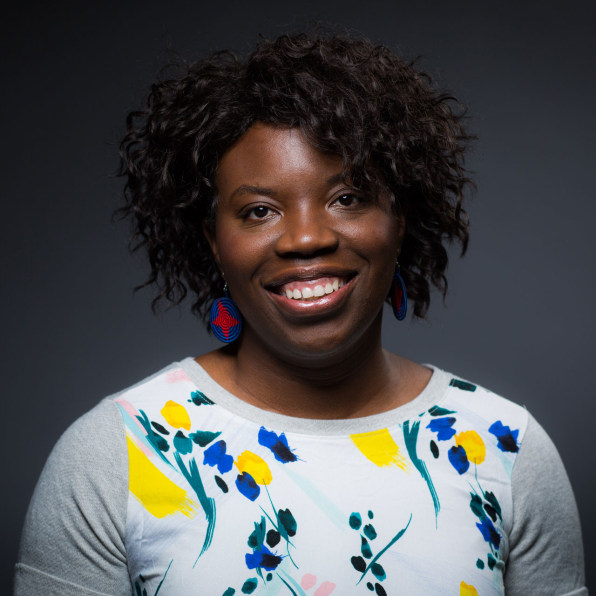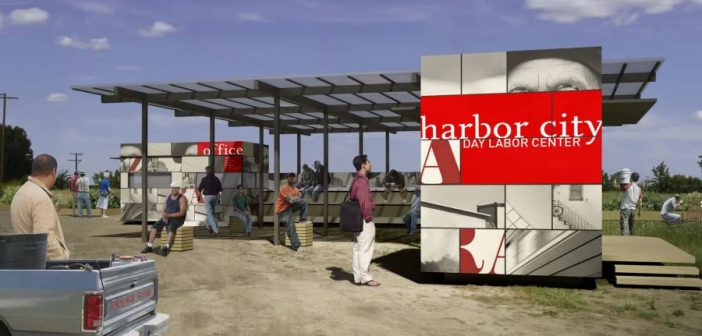The design consultancy founder reveals how she finds clients, why she refuses to hold traditional community meetings, and why design equals dignity.
Liz Ogbu is the founder and principal of the design consultancy Studio O, a multidisciplinary design and innovation firm that focuses on creating sustained social impact with communities in need. She spoke to Doreen Lorenzo for Designing Women, a series of interviews with brilliant women in the design industry.

Doreen Lorenzo: How did you get to where you are? Was it a straight path, or did you take a curvy route?Liz Ogbu: I describe it as a “Choose Your Own Adventure” approach. I did architecture studios at MIT, and urban economics and sociology at Wellesley. Even when I have found myself in traditional environments, I have looked for ways to spend time at looking at this intersection. I continued to seek out ways to explore that experience from a fellowship I did right after college, which had me living and working in sub-Saharan Africa for a year, to working with Ideo.org which allowed me to have more international projects and really dive deeper into human-centered design as a process. After that experience, I found that there was a lot of demand to have me on different projects just because of the different spaces that I had been in over the course of my career, and I realized that none of the places that I was talking to about going in-house offered the variety to play in as many different sandboxes as I was finding on my own. So at that point I decided that the best thing to do for me to do is to start my own firm, which I did.
I don’t really think there’s a blueprint for what Studio O has to look like. I’ve always embraced that it should operate in the space of experimentation and that I should continue to push it each year in the things that I’m feeling most called to, what sandboxes we need to play in, the different ways in which I work with other firms, and the different ways in which I think of what it means to be a designer.
DL: It is an interesting point that in order to do your work you’ve got to find the right kind of clients. So what are you looking for in a client?
LO: In some ways, it is a bit like dating. There are oftentimes some initial conversations where I’m really trying to understand their positioning. What is important to them? What are they trying to get out of this project and this effort, and what has brought them to the point where they’re willing to take a risk and try something different?
I also believe that if it does seem like we have fundamentally different ways of looking at something, I’m okay with saying goodbye to the client and walking away from the project, and have done that before. We need to feel free to do that. It’s not a matter of me being wrong or them being wrong, but it’s a matter of if we have lost alignment, then it makes no sense for us to continue to be together.
DL: That’s just so logical and mature. You watch people in those situations struggling, and you’re absolutely right. So let’s talk about some of your rewarding experiences. Those special moments that have made a profound impact on you in your career.
LO: Perhaps one of my earliest memories of “I’m onto something here” was back when I was working for Public Architecture. One of the projects that I worked on for many years was something called the Day Labor Station, a prototype shelter that was designed to be at informal hiring sites—so the Home Depot parking lot, gas stations, wider street corners. It got a lot of attention and our phones started ringing off the hook with different organizations and cities who were interested in talking to us about that. One of the groups that reached out and eventually became a partner on the project was the National Day Labor Organizing Network. It’s a coalition of day laborer organizing groups across the country and they actually have a biannual conference. They asked if we could come in and just present the project because they felt that it was something that their members should know about. I went and I only talked for five minutes about why we chose to do the project and the workers that we had talked to to help inspire what needed to be part of the project and where we were with it, and at the end got a standing ovation.
I often say design equals dignity. And in this moment, it was like me and my team saying that we believe you are deserving of dignity. We see that for you and we honor the work that you do. The applause wasn’t about the greatness of the project; it was a “thank you for seeing us.”
DL: What’s your definition of design? How would you describe it?
LO: I think that design is an intentional creative manifestation. But then in terms of how I see my work, I really believe that every single person has a story that is of value even if we don’t have a lot in our society that values those stories. I see my role as a designer to be helping to shape the spaces that enable people to live their best stories.
DL: That’s a very good description. Were there instances where, you know, the community was telling you one thing, and clients wanted different things?
LO: I’m notorious amongst my clients because I often refuse to hold traditional community meetings, particularly in the beginning of a project. I find them to be highly transactional. They don’t actually create relationships. And relationships are required to be able to get people to be willing to take risk and to create conditions of trust that help us know what we really need to do, what’s really bothering people, and what’s really at the heart of their desires. I really look for opportunities to create smaller engagements that allow that depth of conversation.
Oftentimes in our processes, even if we’re doing all this work to bring good, there’s often not enough space left to just hold for the pain that exists, to talk about what that grieving might look like, and also think about how could we look at these projects as not just a delivery of services or delivery of social impact, but the delivery of healing. Whatever the project, we should be looking for the outcome: What would a healed community look like?
I’ve been looking to see how I can make that a more intentional layer for the work. Part of my research looking at this has been through Buddhist texts where there’s a lot of conversations about how the only thing we can be certain of is ourselves. We keep on relying on external factors to provide certainty, and the reality is that they can’t. The only thing we can know is how we are moving through the world. Change is about being open to the uncertainty, and we are not necessarily raised to be comfortable with uncertainty.
DL: In your mind where is design education moving?
LO: It’s at a very interesting juncture right now. A lot of colleagues and I in the community-engaged design space had to independently supplement our learning because the design institutions that we trained at were not teaching these things. I’ve been working with a program for the last seven years called the Design Futures Student Leadership Forum, which was created as a university consortium with the knowledge that a lot of schools still don’t have curriculum in this, but a lot of students are interested. We created a program where students get to come to the summer program, learn from leading practitioners and academics who are doing this work, and then take that back to their schools. We’ve started to institute things like a core curriculum that teaches things like Oppression 101 and the history of the built environment. The workshops are really rooted in getting the students to understand what is their power and privilege, and then how do they think about that as a tool to operate in communities.
For a little too long, there’s been a heavy reliance that doing good is just enough. We need to shift to a frame of what does it mean to do right and what does it mean to do less harm, and be less complicit, which might require of us the more radical positioning in how we operate. That’s a conversation that just needs to start happening more. Because all around us, we’re seeing cracks in the foundations of the system that have held up a lot of things that have not been right to a lot of people.
–
This article first appeared in www.fastcompany.com
Seeking to build and grow your brand using the force of consumer insight, strategic foresight, creative disruption and technology prowess? Talk to us at +9714 3867728 or mail: info@groupisd.com or visit www.groupisd.com



